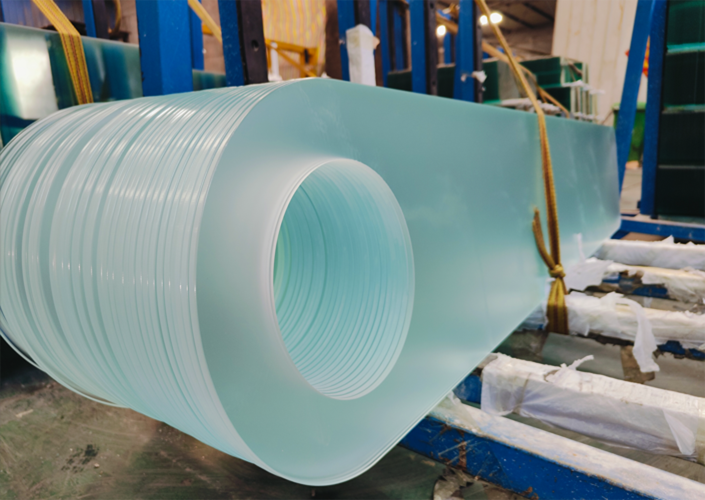Dec . 25, 2024 08:55 Back to list
Understanding the Costs Involved in Laminated Glass Production and Installation
The Cost of Laminated Glass A Comprehensive Overview
Laminated glass has become increasingly popular in various applications, ranging from architecture to automotive industries. Known for its exceptional safety features and acoustic insulation, laminated glass consists of two or more layers of glass bonded together with an interlayer—commonly made from polyvinyl butyral (PVB)—which greatly enhances the glass's performance. Although laminated glass is more expensive than standard glass, its benefits often justify the cost, depending on the intended application. This article delves into the factors influencing the cost of laminated glass, its advantages, and potential applications.
Factors Influencing Cost
1. Materials Used The primary factor contributing to the cost of laminated glass is the quality of materials used in its production. High-grade glass and durable interlayers, such as PVB or ethylene-vinyl acetate (EVA), can significantly raise the price. Additionally, specialty glasses like UV-filtering or colored glass can further increase costs.
2. Thickness and Size The thickness of the glass and the size of the panels greatly affect pricing. Thicker glass provides better impact resistance and sound insulation but is more costly. Larger panels also require more raw materials and transportation, leading to higher costs.
3. Production Process Laminated glass is produced through a meticulous process involving heating and pressing. This process is energy-intensive, and its complexity adds to the overall cost. High-quality laminated glass often undergoes rigorous quality control testing, which can further drive up production costs.
4. Customization Custom features, such as specific dimensions, decorative elements, or added functions (like UV protection or anti-fog capabilities), can increase costs. Customization may also involve additional handling and processing stages, thus impacting the final price.
5. Market Demand Economic factors also play a significant role in the cost of laminated glass. Fluctuations in demand—driven by construction projects, renovation works, and automotive needs—can lead to variances in pricing. During high-demand periods, one can expect prices to rise.
6. Installation Costs The total cost associated with laminated glass also includes installation. Laminated glass is heavier and requires specialized handling and installation techniques, which can add to labor costs. Skilled labor might be necessary to ensure that the glass is installed correctly, thereby ensuring its performance benefits.
Advantages of Laminated Glass
Despite its higher price point, laminated glass comes with various advantages that can make it a worthy investment.
laminated glass cost

- Safety and Security The interlayer effectively holds shattered glass in place, reducing the risk of injury. This feature is particularly advantageous in areas prone to break-ins.
- Sound Insulation Laminated glass provides excellent sound dampening
. It is ideal for use in urban settings where traffic noise can be disruptive.- UV Protection The interlayer can block up to 99% of harmful ultraviolet rays, protecting furniture and interiors from fading.
- Energy Efficiency The thermal properties of laminated glass can contribute to a building's energy efficiency, potentially leading to reduced energy costs over time.
Applications of Laminated Glass
Laminated glass finds itself in various applications, further establishing its market value. It is widely used in
- Commercial and Residential Buildings Often used in windows and facades, it combines aesthetic appeal with safety. - Automobiles Laminated glass is commonly used in windshields for its impact resistance and safety features.
- Glass Railings and Floors It can be employed in architectural designs where safety is paramount without compromising on a modern aesthetic.
- Skylights Its insulating properties make laminated glass a preferred option for skylights, providing energy efficiency and protection from harmful rays.
Conclusion
The cost of laminated glass may be higher than that of standard glass, but its myriad benefits often offset the expense. Factors such as material quality, thickness, production complexity, and market demand significantly influence pricing. With increasing awareness of safety and environmental concerns, laminated glass remains a resilient choice across industries, proving that investing in quality can lead to long-term savings and peace of mind. Whether for residential, commercial, or automotive use, laminated glass stands out as a capable, valuable option.
-
Safety and Style with Premium Laminated Glass Solutions
NewsJun.24,2025
-
Reinvents Security with Premium Wired Glass
NewsJun.24,2025
-
Premium Float Glass Line for Modern Architecture
NewsJun.24,2025
-
Low Emissivity Glass for Energy-Efficient Architecture
NewsJun.24,2025
-
High-Performance Insulated Glass Solutions for Modern Architecture
NewsJun.24,2025
-
Elevates Interior Style with Premium Silver Mirror
NewsJun.24,2025
Related PRODUCTS














